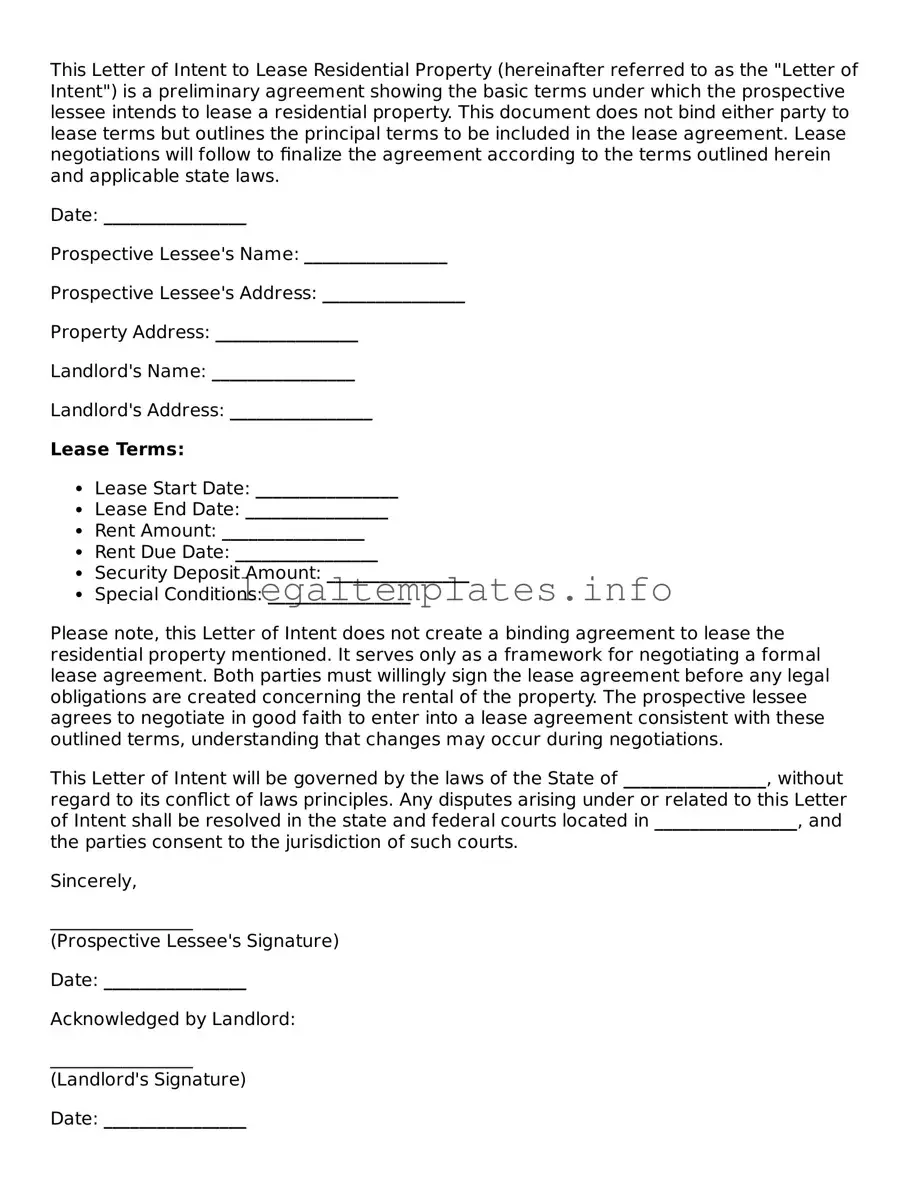What is a Letter of Intent to Lease Residential Property?
A Letter of Intent to Lease Residential Property is a document in which a prospective tenant expresses their interest to a landlord or property manager about renting a specific residential property. It serves as a preliminary agreement before the formal lease contract, outlining the key terms and conditions that both parties are considering for the potential lease. This might include rent amount, lease duration, and any specific requirements or expectations from either party.
Is the Letter of Intent to Lease Residential Property legally binding?
Typically, a Letter of Intent to Lease Residential Property is not legally binding in regards to finalizing a lease agreement. It is more of a negotiation tool that outlines the terms under which the tenant would agree to lease the property. However, some clauses within the letter, such as confidentiality provisions or an agreement to negotiate in good faith, might be binding. It's important to carefully read the document to understand which parts, if any, are legally binding.
What should be included in the Letter of Intent?
The Letter of Intent should include specifics such as the rental amount, lease duration, security deposit details, and any other special conditions or provisions important to the tenant or landlord. Also, it's crucial to clearly identify the property in question, often including the address and a description. The letter may also specify who is responsible for utilities, maintenance, and repairs, among other operational details of the leasing agreement.
Who prepares the Letter of Intent to Lease Residential Property?
Typically, the prospective tenant prepares and submits the Letter of Intent to the landlord or property manager. However, in some cases, the landlord might provide a template or draft the Letter of Intent themselves, particularly if they have specific terms or conditions they wish to establish at the outset of negotiations.
How do I submit the Letter of Intent?
The submission process may vary depending on the landlord or property management's preferences. It could be submitted via email, through a property management system, or handed in person. It's advisable to ask the landlord or property manager about their preferred method of submission to ensure it's received officially and in a timely manner.
What happens after I submit the Letter of Intent?
After submission, the landlord or property manager will review the Letter of Intent. They may accept the terms as is, reject them, or most commonly, return with a counteroffer. This opens the negotiation phase, where both parties discuss and adjust terms until an agreement is reached. Once the terms are agreed upon, the next step typically involves drafting and signing the official lease agreement.
Can I withdraw my Letter of Intent?
Yes, in most cases, you can withdraw your Letter of Intent before signing a formal lease agreement, especially since the letter itself is usually not legally binding concerning the lease terms. However, if there are any binding clauses within the letter, such as an exclusivity clause or a non-refundable deposit, withdrawing may have legal implications. It's important to be clear about the terms before submitting or attempting to withdraw the letter.
Does submitting a Letter of Intent guarantee I'll get the property?
Submitting a Letter of Intent does not guarantee that you will secure the lease on the property. It's the first step in the negotiation process, showing your serious interest and proposed terms for leasing the property. The property owner or manager has the discretion to consider other offers or to reject the proposal based on their criteria or terms that cannot be agreed upon by both parties.
